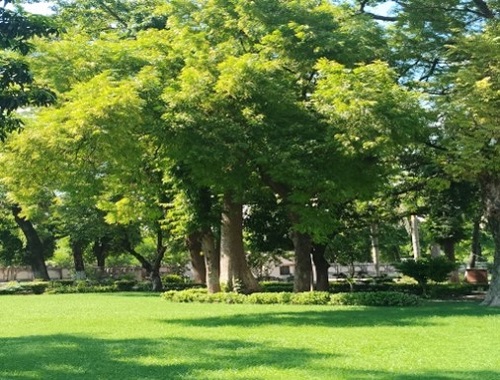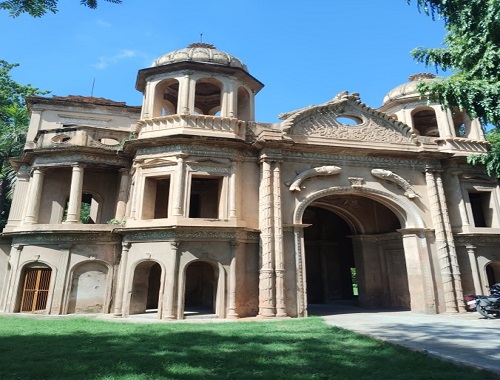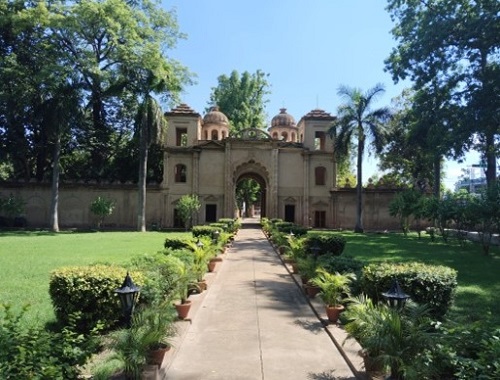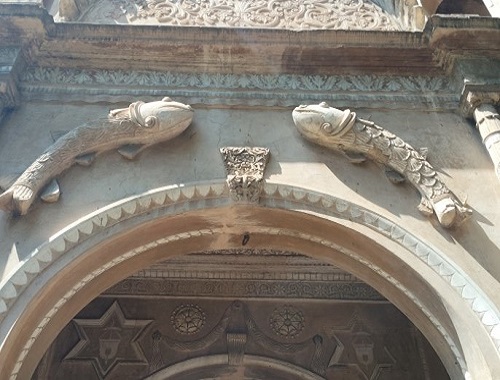



Sikandar Bagh – A Historical Garden in Lucknow
Sikandar Bagh is a beautiful garden located in Lucknow, built at cost of 5.00 lakhs, by nawab Wajid Ali Shah in 1800, in memory of his beloved queen Sikandar Mahal. The architects of Siskandar bagh were GulaAli Reza Khan, Dianut-Ud- Daula and Sabit Ali.
History
The garden was built with Lakhori bricks and plastered with lime and decorated with plaster mouldings. The word “Bagh” means garden in Urdu and Persian. The garden covers about 4.5 acres of land and was once filled with beautiful flowers, trees, and a baradari (a pavilion with 12 doors), where the Nawab used to rest and enjoy music and poetry.
The garden is designed in the Mughal style, with high walls and an arched gateway. Inside, the central structure was used as a summer house and for cultural activities. The layout of Sikandar Bagh reflects the Nawab’s love for art, culture, and nature. In its early days, it was a peacefuland lovely place, perfect for leisure and gatherings.
However, Sikandar Bagh is also remembered for a tragic and important event in Indian history. During the First War of Independence in 1857, Indian soldiers (also called sepoys) rebelled against the British East India Company. In Lucknow, Sikandar Bagh became a stronghold for the rebel forces who were fighting the British.
On 16th November 1857, British forces led by General Colin Campbell attacked Sikandar Bagh. Around 2,000 Indian rebels were inside the garden, trying to defend it. The British soldiers stormed the garden and a violent battle took place. 2000 Freedom fighters almost all killed including a lady warrior who killed many of the British soldier’s before she shot dead. The British later took control of the garden, and the area became one of the bloodiest sites of the revolt.
One of the most famous photos of the 1857 revolt was taken at Sikandar Bagh. It was clicked by a British photographer named Felice Beato, after the battle was over. His photograph showed the dead bodies of the Indian rebels, which shocked people in both India and Britain. This photo became a powerful reminder of the brutality of the rebellion and the cost of war.
Today, Sikandar Bagh is part of the National Botanical Research Institute (NBRI) in Lucknow. The garden is well-maintained and open to visitors. Although it is peaceful now, the old walls and gate still remind people of the past. Tourists and history lovers often visit Sikandar Bagh to learn more about India’s freedom struggle and the stories of those who fought bravely.
In addition to its historical importance, the garden is also a place for botanical research. Scientists study different types of plants and flowers here. The garden helps people learn about nature and the environment.
Sikandar Bagh stands as a symbol of both beauty and bravery. It reminds us of a time when people stood up for their freedom, even at great cost. Visiting the garden today is not only a walk through nature, but also a journey into India’s past. It teaches us to value our history and remember the sacrifices made by our ancestors.
